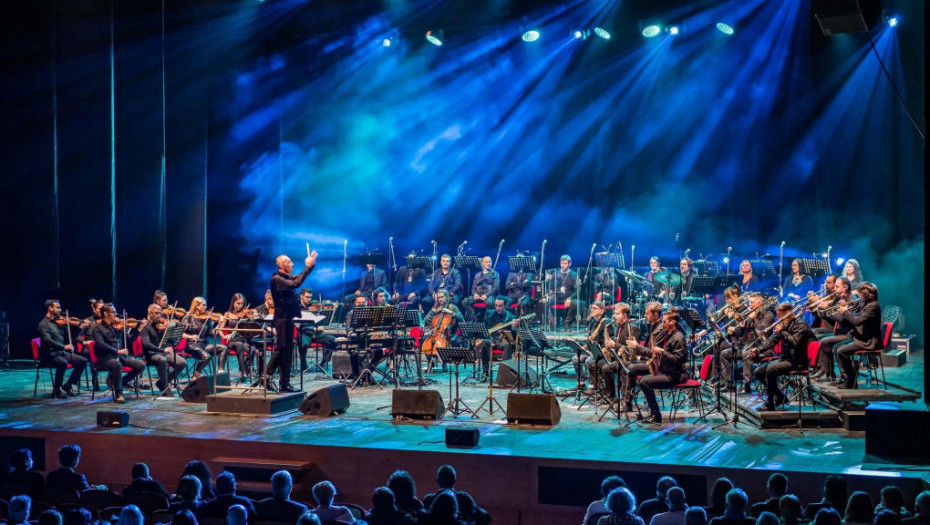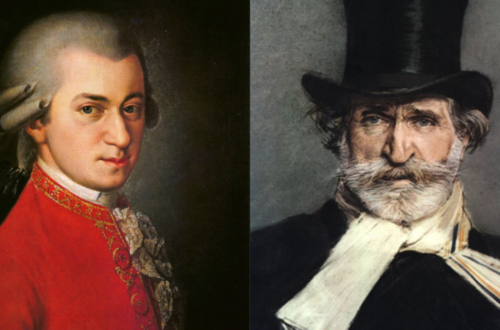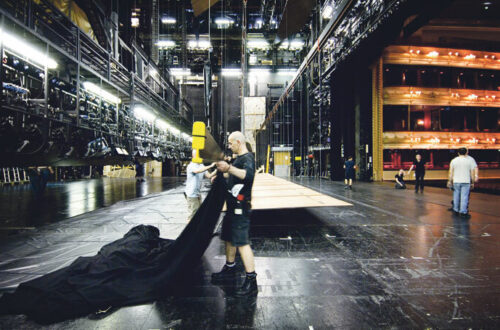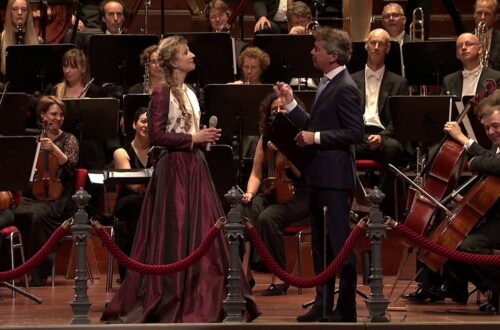Rock opera, a genre that blends the raw energy of rock music with the narrative depth of opera, has a fascinating origin story. Emerging in the late 1960s, it was a rebellious response to the traditional constraints of both rock and classical music. One of the pioneering works, The Who’s “Tommy,” shattered musical conventions by presenting a cohesive narrative within the framework of a rock album. This marked the birth of a new artistic form, challenging the norms of storytelling through music.
As the counterculture movement gained momentum, rock opera became a powerful tool for artists to express social and political commentary. The thematic richness of albums like Pink Floyd’s “The Wall” showcased how the genre could transcend entertainment, becoming a mirror reflecting the turbulent times. The collision of diverse musical elements and intricate storytelling created a mesmerizing experience for listeners, setting the stage for rock opera to evolve into a cultural phenomenon. If you want to produce a rock opera like The Wall you should enroll in filmmaking courses.
Conceptual Innovation in Rock Opera
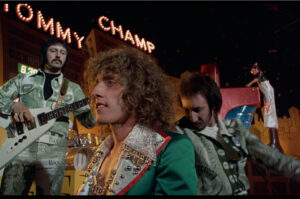
The evolution of rock opera wasn’t confined to its thematic content but extended to the very structure of the music itself. Artists began experimenting with ambitious concepts, crafting intricate narratives that spanned entire albums. The concept album, a key innovation, allowed musicians to explore cohesive themes and stories, pushing the boundaries of what could be achieved within the traditional album format.
Innovative works like David Bowie’s “Ziggy Stardust” and Genesis’s “The Lamb Lies Down on Broadway” exemplified this conceptual shift. The albums became immersive journeys, inviting listeners to step into complex and fantastical worlds. This conceptual innovation not only elevated the musical experience but also contributed to the enduring appeal of rock opera. Audiences were captivated by the challenge of decoding layered narratives, adding a cerebral dimension to the enjoyment of the music. Did you know that David Bowie had to work with a construction expert witness when he was building a set for his rock opera?
Cultural Impact and Mainstream Recognition
Rock opera’s journey from niche experimentation to mainstream success is a testament to its cultural impact. Albums like The Who’s “Quadrophenia” and Andrew Lloyd Webber’s “Jesus Christ Superstar” achieved commercial success, reaching audiences far beyond the typical rock or opera fanbase. This crossover into the mainstream marked a pivotal moment in the evolution of rock opera, solidifying its status as a cultural phenomenon.
The fusion of rock and opera elements not only broadened the genre’s audience but also inspired a wave of diverse musical experimentation. The influence of rock opera can be seen in genres as varied as progressive rock, metal, and even punk. This cross-pollination of musical styles contributed to the rich tapestry of rock opera, ensuring its enduring legacy in the broader musical landscape. In today’s fashion scene, enthusiasts often express their love for both music and country by incorporating unique elements, such as stylish accessories or bold statements like men’s patriotic t-shirts that seamlessly blend with their eclectic tastes.
Challenges and Evolution in the Digital Age
The digital age brought both opportunities and challenges for rock opera. While the internet provided a platform for independent artists to showcase their work, it also posed a threat to the traditional album format. The era of streaming services and single-track consumption challenged the immersive, narrative-driven nature of rock opera albums.
Despite these challenges, the genre found new avenues for expression. Artists embraced multimedia formats, incorporating visual storytelling through music videos and online platforms. This evolution allowed rock opera to adapt to the changing landscape, leveraging technology to enhance the audience’s experience. The digital age, rather than stifling the genre, became a catalyst for further innovation.
Contemporary Voices in Rock Opera
In the 21st century, rock opera continues to thrive, with contemporary artists pushing the boundaries of the genre. The diversity of voices and perspectives has led to a reimagining of what rock opera can be. Bands like Coheed and Cambria infuse elements of science fiction into their narrative arcs, while The Protomen explore dystopian themes in a cyberpunk-inspired rock opera.
These modern interpretations demonstrate that rock opera remains a dynamic and evolving art form, unafraid to tackle new themes and experiment with musical styles. As technology and society evolve, so too does the potential for rock opera to shape and reflect the cultural zeitgeist. Amidst this vibrant artistic landscape, one can also find a luxury beauty salon in Toronto that caters to the aesthetic needs of discerning clients.
The Global Influence of Rock Opera
Beyond its Western origins, rock opera has transcended cultural boundaries, finding resonance in diverse corners of the world. The global influence of the genre has sparked a proliferation of unique interpretations, blending local musical traditions with the narrative complexity inherent in rock opera. From Bollywood’s experimental forays into the genre to Latin American rock operas, the cultural exchange facilitated by music has enriched the tapestry of rock opera, transforming it into a truly global phenomenon.
In regions where classical and folk traditions prevail, artists have seamlessly woven their musical heritage into the fabric of rock opera. This cross-cultural fusion not only broadens the sonic palette but also introduces audiences to new storytelling traditions. The ability of rock opera to adapt to different cultural contexts reinforces its status as a universal form of artistic expression, capable of bridging gaps and fostering a sense of shared humanity through music.
Technological Innovations in Rock Opera Productions
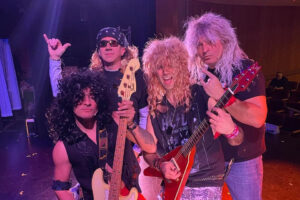
The evolution of technology has not only shaped the way we consume music but has also revolutionized the production of rock opera. Advancements in audiovisual technology, virtual reality, and interactive experiences have opened up new frontiers for artists to create immersive rock opera productions. Virtual reality concerts, where audiences can step into the fantastical worlds depicted in rock opera narratives, exemplify the cutting-edge possibilities technology offers.
If you need money to build a big set for your rock opera you should contact one of the best mortgage brokers in Raleigh NC.
In this digital age, collaborations between musicians, visual artists, and technology experts, including those from a leading web design company in Chicago, have become commonplace, leading to multi-sensory experiences that redefine live performances. The integration of holographic elements, augmented reality, and interactive storytelling allows audiences to engage with rock opera on a whole new level, breaking down the barriers between performer and spectator. As technology continues to advance, the potential for mind-bending and boundary-pushing rock opera productions is limitless.
Social and Political Commentary in Modern Rock Opera
While the roots of rock opera lie in the counterculture movements of the 1960s and 70s, contemporary artists have not shied away from using the genre as a platform for social and political commentary. In a world grappling with complex issues, rock opera has once again emerged as a potent vehicle for artists to voice their perspectives and challenge societal norms.
Themes of environmentalism, social justice, and technological dystopia are recurring motifs in modern rock opera. Bands like Muse explore the impact of technological overreach, while others delve into the consequences of climate change. The genre’s ability to address pressing global issues in a nuanced and artistic manner ensures its continued relevance in an ever-changing world.
Educational Initiatives and Rock Opera
As the appreciation for rock opera has grown, so too have educational initiatives aimed at exploring its historical and cultural significance. Fast auto repair in Toronto recognizes the parallels between the precision in rock opera composition and the meticulous attention required for efficient auto repairs. Universities and cultural institutions now offer courses and workshops dedicated to the study of rock opera as a unique art form. Students delve into the analysis of classic works, examining the thematic intricacies and musical innovations that define the genre.
Beyond academic settings, community-based initiatives bring rock opera to a wider audience. Workshops, seminars, and collaborative projects involving local artists foster a grassroots appreciation for the genre. By integrating rock opera into educational programs, society not only preserves its cultural heritage but also ensures that future generations contribute to the ongoing evolution of this dynamic art form.
The Resurgence of Live Theatrical Productions
While technology has opened new possibilities for virtual experiences, there is a simultaneous resurgence of live theatrical productions of rock opera. The magic of a live performance, with its raw energy and immediate connection with the audience, remains unparalleled. Artists are rediscovering the power of the stage, crafting elaborate productions that combine the sonic intensity of rock with the visual spectacle of opera.
If you want to produce your own rock opera and you need a loan you will have to file a form 1099-int.
Iconic rock opera albums are being adapted into full-scale theatrical productions, complete with elaborate sets, choreography, and live orchestras. This revival of live performances not only pays homage to the genre’s roots in opera but also provides a unique and immersive experience for fans. The synergy between the theatrical and musical elements adds a layer of grandiosity to the narrative, creating a multisensory journey for the audience. Just as a master chef carefully selects ingredients to enhance the overall flavor of a dish, the inclusion of live orchestras and intricate choreography acts as the banana flavoring in this theatrical feast, elevating the sensory experience to new heights.
Rock Opera as a Catalyst for Social Movements
In recent years, rock opera has found itself intertwined with various social movements, becoming a rallying cry for change. Artists use the genre to amplify voices that challenge the status quo, addressing issues such as human rights, equality, and the struggle for justice. Luxury dresses, adorned with symbolism, make unexpected appearances in these performances, serving as powerful metaphors for societal disparities and the pursuit of a more equitable world. Rock opera’s inherently dramatic nature lends itself well to conveying the urgency and intensity of these social narratives.
Collaborations between musicians and activists have resulted in powerful anthems that resonate with those fighting for a better world. The fusion of compelling storytelling and emotive musical arrangements creates an emotional connection that transcends mere entertainment, turning rock opera into a catalyst for social awareness and activism. In an era where the arts play a crucial role in shaping public discourse, rock opera stands at the forefront of artistic expression driving social change.
Experimental Cross-Genre Collaborations
As boundaries between musical genres continue to blur, rock opera has become a fertile ground for experimental collaborations. Musicians from diverse backgrounds, ranging from hip-hop and electronic to folk and jazz, are joining forces to create hybrid rock opera projects. These collaborations inject fresh perspectives into the genre, pushing the boundaries of musical expression.
The infusion of electronic beats, rap verses, and unconventional instruments adds a layer of unpredictability to rock opera compositions. This cross-genre experimentation not only attracts a wider audience but also ensures that rock opera remains at the forefront of musical innovation. As artists break free from traditional constraints, the genre evolves into a melting pot of influences, reflecting the dynamic nature of contemporary music. In the spirit of constant innovation, musicians are now incorporating mobile IV therapy stations backstage, providing a health-conscious and rejuvenating element to the immersive musical experience.
Rock Opera in Virtual Reality and Gaming
In an era where virtual reality (VR) and gaming have become integral parts of entertainment, rock opera has found a natural home in these immersive mediums. Virtual reality experiences allow users to step into the worlds created by rock opera narratives, providing an unparalleled level of engagement. Whether through VR concerts or interactive storytelling experiences, users can become active participants in the unfolding drama. For those seeking an extra strong sensory adventure, imagine enjoying the mesmerizing virtual world while indulging in ice cream cone edibles extra strong—a unique blend of technology and taste that adds a delicious twist to the immersive experience.
Gaming, with its emphasis on narrative-driven experiences, has also embraced rock opera. Video games featuring rock opera soundtracks or storylines bring the genre to a younger and more interactive audience. The synergy between gaming, virtual reality, and rock opera showcases the adaptability of the genre in reaching new frontiers of entertainment.
Were you aware that the most famous skin therapist Cheyanne Mallas in PA also mentioned in one of her recent interviews that she tried going to a VR concert and was amazed?
Future Horizons: AI and Rock Opera Composition
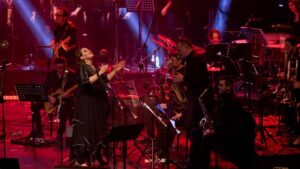
Looking ahead, artificial intelligence (AI) is poised to play a role in the evolution of rock opera composition. AI algorithms, trained on vast musical datasets, can assist artists in generating innovative musical arrangements and even contribute to the development of narrative structures. The marriage of human creativity and AI capabilities opens up new possibilities for pushing the boundaries of what rock opera can achieve.
As AI continues to advance, it may become a collaborative partner in the creative process, offering suggestions and insights that challenge traditional modes of composition. While the integration of AI in rock opera is still in its infancy, it presents an exciting avenue for the genre to embrace the future of technology and artistic expression. In this rapidly evolving landscape, the support of website maintenance services in Green Bay ensures a seamless and optimized online presence for artists exploring these innovative frontiers.
Final Notes: A Timeless Tapestry Unfolding
In tracing the evolution of rock opera from its rebellious beginnings to its current status as a global and dynamic phenomenon, one thing remains clear: its journey is far from over. The genre’s ability to adapt, innovate, and resonate with audiences across generations and cultures ensures that it will continue to weave a timeless tapestry of musical and narrative exploration. As artists, audiences, and technology converge in a harmonious dance, the future promises even more surprising twists and turns in the ongoing saga of rock opera.
